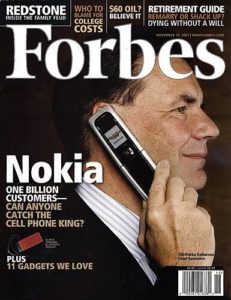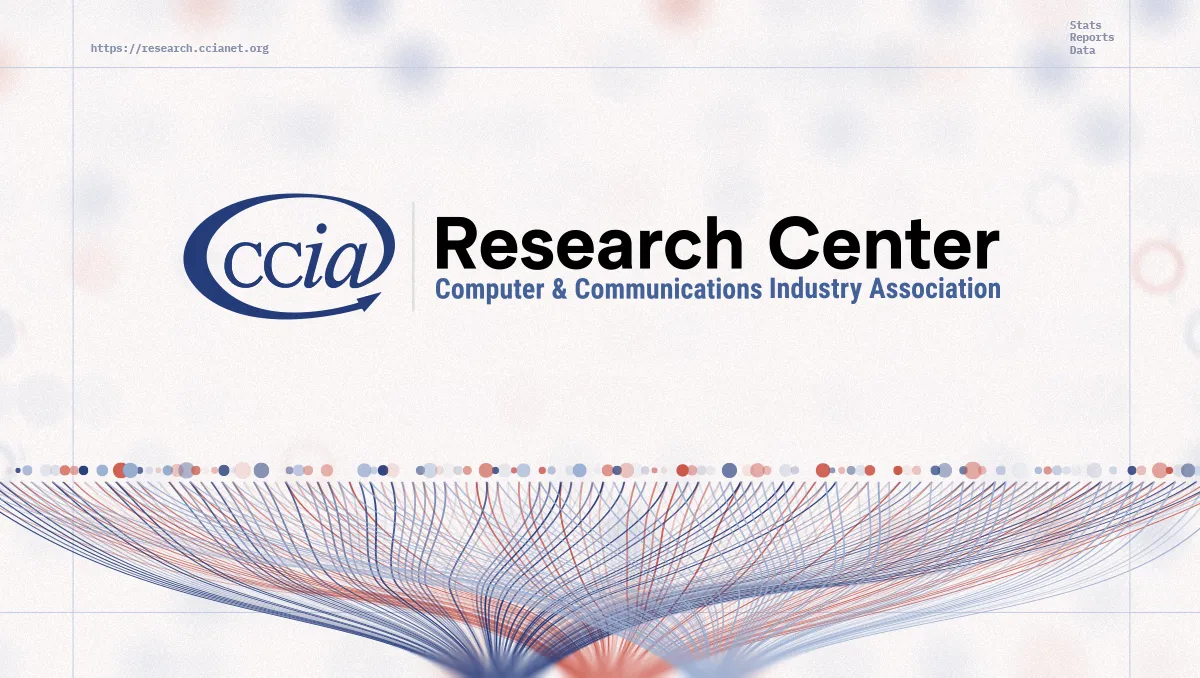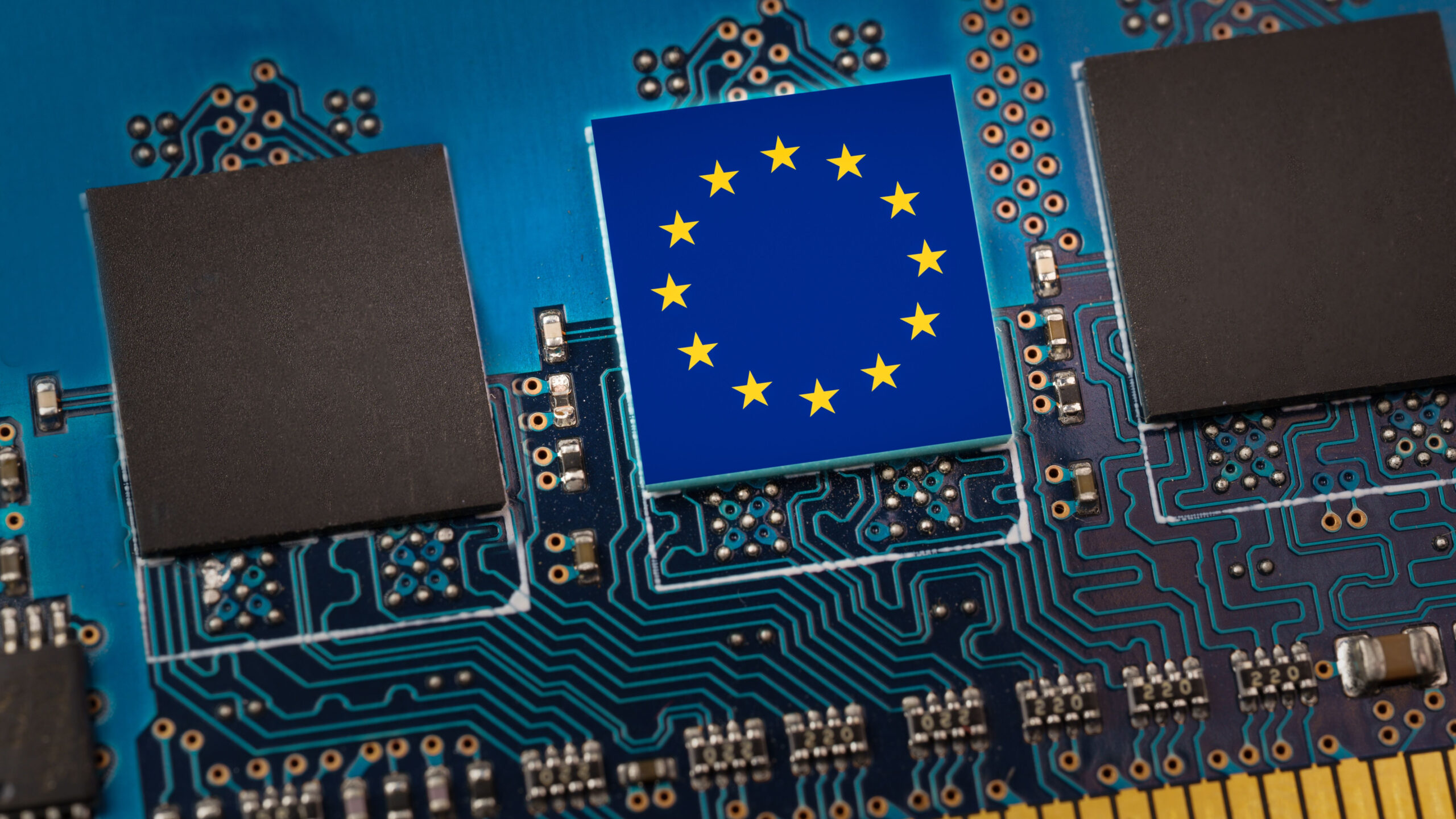Lessons From Nokia’s Demise – The Cost of a Fragmented Developer Experience
Nokia’s mobile phone business went from a position of seemingly unchallengeable strength to sale and shutdown within 5 years. As a Forbes magazine cover from 2007 screamed out:
“Nokia: One Billion Customers — Can anyone catch the cell phone king?”
Within a few years we knew the answer.
Many have tried to explain this demise; explanation will be a minor feature of this post. Rather it will focus on a couple of the causes and draw the lessons for contemporary technology, economic and competition policy.
Nokia’s reinvention and rise after the economic downturn of the early 1990s that affected it and the Finnish economy was dramatic. The sprawling, 120 year old conglomerate made paper, pulp, cables, rubber boots, televisions, gas masks, artillery range finders and generated electricity. In 1992, the new chief executive, Jorma Ollila embarked upon a process of focusing the company on emerging mobile technology with incredible effect.
By 1997 Nokia had become the largest manufacturer of mobile phones by volume in the world, overtaking Motorola. For the next decade and more Nokia became synonymous with the mobile phone, selling between 30-40% of all mobile phones in the world, with a yet higher market share for smartphones, each year and making almost all of the profits in the mobile device industry. The Nokia 8110 was famously the phone of Neo in The Matrix; the Nokia ringtone could be heard on every train and street around the world. In India, mobile phones were simply referred to as Nokias, just as we refer to “Photoshopping” a digital image or ‘Hoovering’ up a mess.
Designers such as Frank Nuovo created iconic industrial designs that kept people coming back for more even though the phones were famously long-lasting. Unmatched efficiency in the supply chain and manufacturing kept prices low and competitors wondering how it was all done.
Come 2007 when Apple launched the iPhone and Google launched the Android operating system Nokia imagined its long list of advantages would mean it would see off these new challengers just as it had Motorola and Sony Ericsson. It couldn’t. So what went wrong?
It’s the software, stupid
Nokia bosses remarked there was nothing advanced about the first iPhone; it couldn’t even do 3G! But what wasn’t so immediately apparent was how revolutionary the software, combined with a touch screen, was; something much more important than an attractive design.
Nokia was at that time the predominant player in the (smaller) smartphone market. It sold smartphones running the Symbian operating system, of which it was one of the owners (later purchasing Symbian outright). Nokia’s implementation was called ‘S60’. It controlled about 65% of the smartphone market and Symbian yet more of the smartphone operating system market.
After Apple opened its ‘App Store’ in 2008 it became apparent that people would use their smartphones for much more than calling and texting. Apple’s operating system deliberately made it easy for developers to develop for iOS and to publish their application, something Android also achieved.
Nokia understood that it needed to do the same. However, Symbian has always been a complicated system to develop for. Much more importantly, however, was the fragmented nature of Symbian. There was only one Symbian, but Nokia smartphones ran different ‘forks’. As David Gilson notes in this blog post on All About Symbian:
We know that ‘Latin’ languages such as Italian, Spanish and French emerged from the same source, but while the modern languages have similarities they are not ‘interoperable’; an Italian will not necessarily understand a Portuguese speaker. That is what Symbian had become.
This meant that an application that ran on one Symbian based smartphone wouldn’t necessarily run on another Symbian smartphone also made by Nokia (or another manufacturer using Symbian). A developer would therefore need to rewrite the application for each ‘fork’ of Symbian, with all the additional cost and hassle. Same manufacturer, different software versions, incompatible applications. Compared to Apple and Android this made the business case very unattractive to developers, even though Nokia had many more users that those two companies combined. Nokia / Symbian users ended up downloading many fewer applications than on rival platforms such as iOS; developers earned less, consumers used less and the benefits of mobile technologies were slower to be felt. It also meant that Nokia spent much more heavily on development costs.
For a couple of years Nokia raced to try to improve the Symbian experience for developers and consumers. In 2011 the chief executive published his infamous ‘burning platform’ memo: Symbian was mothballed and Nokia announced a partnership with Microsoft to use the Windows Phone system. By this stage Nokia’s star was falling with consumers, mobile phone companies and the all-important developers. The rest, as they say, is history.
But what are the lessons from this episode for policymakers hoping to reap the benefits of mobile technology and to create the optimal environment for app developers, for consumers, for those making mobile operating systems and the rest of the mobile technology ecosystem?
Firstly, technology platforms and leading companies can disappear in a flash. Any company not investing heavily in the innovation race may find itself rapidly passed despite its apparent strengths; even those with high R&D expenditure may not be able to head off an innovative challenge and a new way of doing things. Policy should ensure barriers to entry are low and that rules are principles-based. Rules that are too precise risk becoming outmoded before they are even in force.
Secondly, software fragmentation reduces the usefulness of a technology or service for consumers and developers or retailers. In the current European technology debates there are two important forms of fragmentation under discussion.
The first is geographic fragmentation, making it more difficult for a consumer to purchase across borders and for sellers to offer their product across borders.
The second is fragmentation of operating systems, something central to the European Commission’s statement of objections to Google concerning its Android mobile operating system. The Commission lays out concerns about Google’s control of the operating system, claiming it impedes innovation in applications. The Commission is concerned that Google’s agreement to limit fragmentation across Android devices may prevent mobile phone manufacturers using other, incompatible, versions of Android.
As we have seen from the Nokia experience, if Google were to allow each device maker that has licenced Android to fork the operating system such that it was incompatible it would quickly end up in a situation where most apps written for Android wouldn’t work on most phones. The system would quickly become unattractive to developers and useless to users, leaving iOS as the only system with sufficient control so as to attract developers. This is the purpose of testing for compatibility so that some customisation is possible. The Symbian example illustrates the pitfalls that companies and competition enforcers should not fall into.
The advances of the last 8 years have come at a phenomenal speed. We are now able to buy, sell, photograph, publish, paint, film, measure, socialize, and communicate at low cost from the palm of our hands. The developer experience has been key to making this happen and empowering that well of creativity. The Nokia experience shows us that failing to ensure compatibility between versions of software can be fatal. Compatibility between software versions ensures that applications can run across multiple devices, developers get a return on their investment, consumers do not need to buy a new version of an app when they change devices, while manufacturers can still customise software on their devices.
In order that the next 8 years brings as many advances, policy needs to work towards a minimum of fragmentation and a maximum of opportunity. This will be the basis for a technological reinvention that we cannot yet imagine, something that Nokia itself has been doing since 1870.









